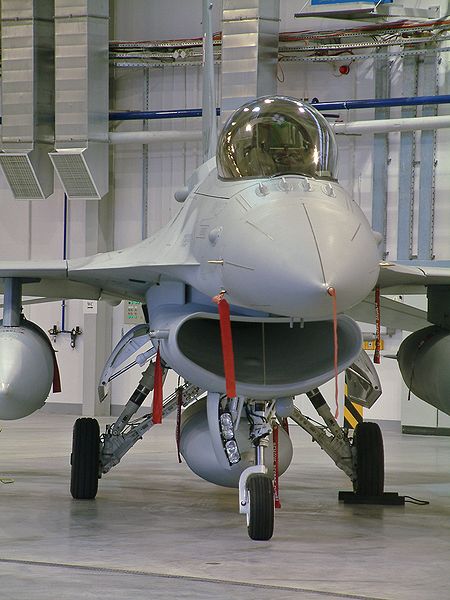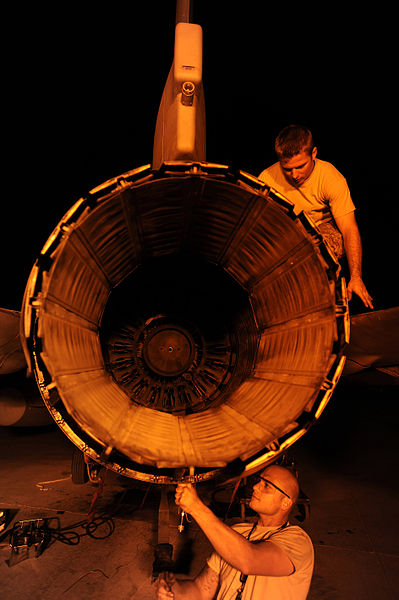NOTE: visit www.techenlife.com for more details regarding this blog and military aviation!!
The General Dynamics F-16XL is a derivative of the F-16 Fighting Falcon, with a cranked-arrow delta wing. It was entered in theUnited States Air Force’s (USAF) Enhanced Tactical Fighter (ETF) competition but lost to the F-15E Strike Eagle. Several years after the prototypes were shelved, they were turned over to NASA for aeronautical research.
In 1977, the F-16XL started out as the F-16 SCAMP (Supersonic Cruise and Maneuver Prototype) at General Dynamics Fort Worth. Under the leadership of Harry Hillaker (father of the original F-16), the original goal of the program was to demonstrate the applicability of supersonic transport technologies to military aircraft.[1] That year, under the supervision of Hillaker and Jim Gordon, Andrew Lewis was given a supposedly quick project to study the applicability of supersonic transport technologies to military aircraft. The big wing generated a lot of lift, and typical aerodynamic limitations of delta wings were overcome by the F-16’s relaxed static stability. Kenny Barnes led the work into tweaking the F-16s electronic flight control system to allow control at high angles of attack. The wing was also a big fuel tank which boosted range considerably. The study went on for two years with important contributions from many other engineers, but Lewis was able to stay out in front and designed the wing’s plan form, airfoil, twist and camber. The goal of the cranked arrow was to have a high sweep inboard panel for low drag at supersonic speeds, and a low sweep outboard panel that would provide better handling and maneuverability at subsonic speeds.

Model 400 design team, starting left: Harry Hillaker, Andrew Lewis, Kenny Barnes, Jim Gordon
Working closely with NASA’s Langley Research Center, the company invested significant Internal Research and Development (IRAD) funds for wind tunnel testing and that led to the Model 400. It featured all moving wing tips for roll control and an all moving vertical tail. These surfaces were actually the horizontal tail surfaces from the F-16A. These surfaces were later dropped as they did not provide adequate control at low speed, high angle of attack. Also, there would have been no provision for wing-tip mounted missiles. The main wing incorporated forebodystrakes to enhance vortex generation for high angle of attack maneuverability, negative stability for improved subsonic lift and reduced supersonic drag. It was built around a 40-inch fuselage stretch. Both the large wing and fuselage stretch yielded a dramatic increase in range at all speeds. In 1979, with a strong positive response by the USAF, GD released the Model 400 for a company funded preliminary design effort.[2]
[edit]Enhanced Tactical Fighter competition

F-16XL compared with a conventional F-16.
In 1980, the USAF signed on as a partner, providing the third and fifth production F-16 airframes. These two airframes became the only extant examples of the F-16XL.
In March 1981, the USAF announced the Enhanced Tactical Fighter program to procure a replacement for the F-111 Aardvark. The concept envisioned an aircraft capable of launching deepinterdiction missions without requiring additional support in the form of fighter escort or jamming support. General Dynamics submitted the F-16XL, while McDonnell Douglas submitted a variant of the F-15 Eagle. Though the two aircraft were competing for the same role, they were fairly different in design approach: the F-15E is basically an F-15D two-seat trainer with the back-seat station modified to support ground-attack instruments, while the F-16XL has major structural and aerodynamic differences from the original F-16. As such, the XL would have required much more effort, time and money to put into full production. Additionally, the Strike Eagle has two engines, which gives it more thrust and thus the capacity to carry more weapons and/or armor into combat. Furthermore, engine redundancy can be very useful for an aircraft whose mission involves operating within the reach of anti-aircraft artillery (AA) and surface-to-air missiles (SAM), in addition to the standard threats offighter aircraft and interceptors.







